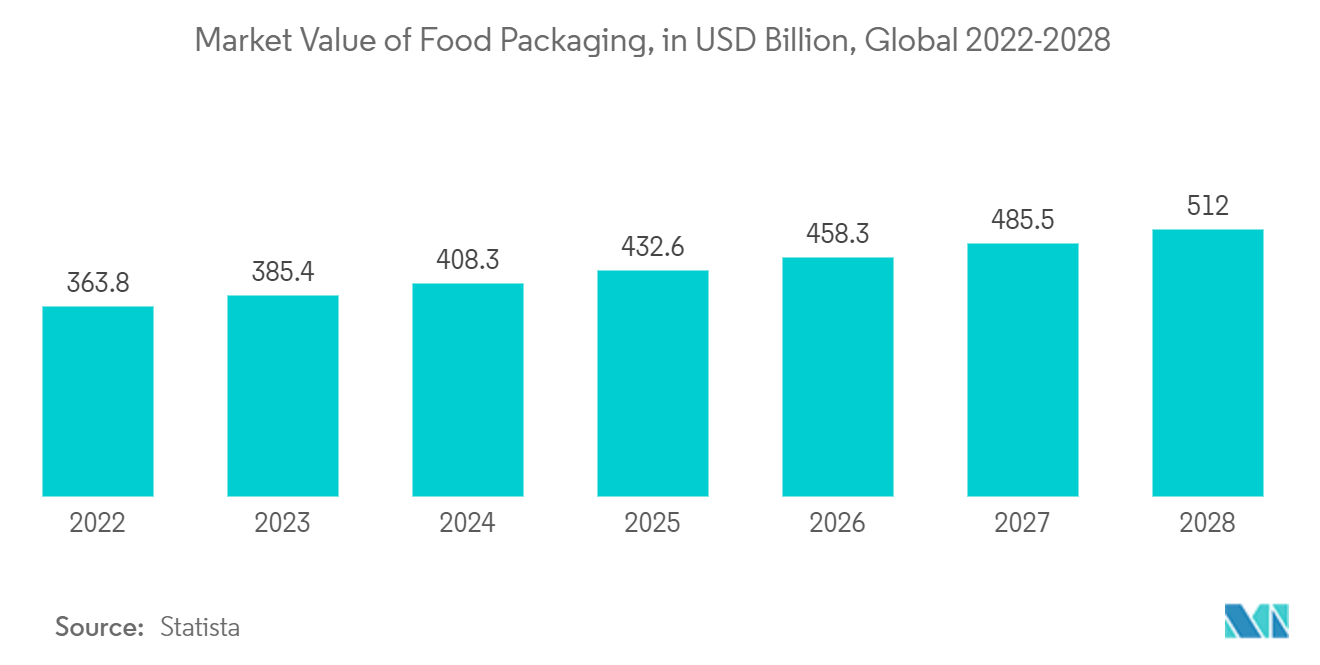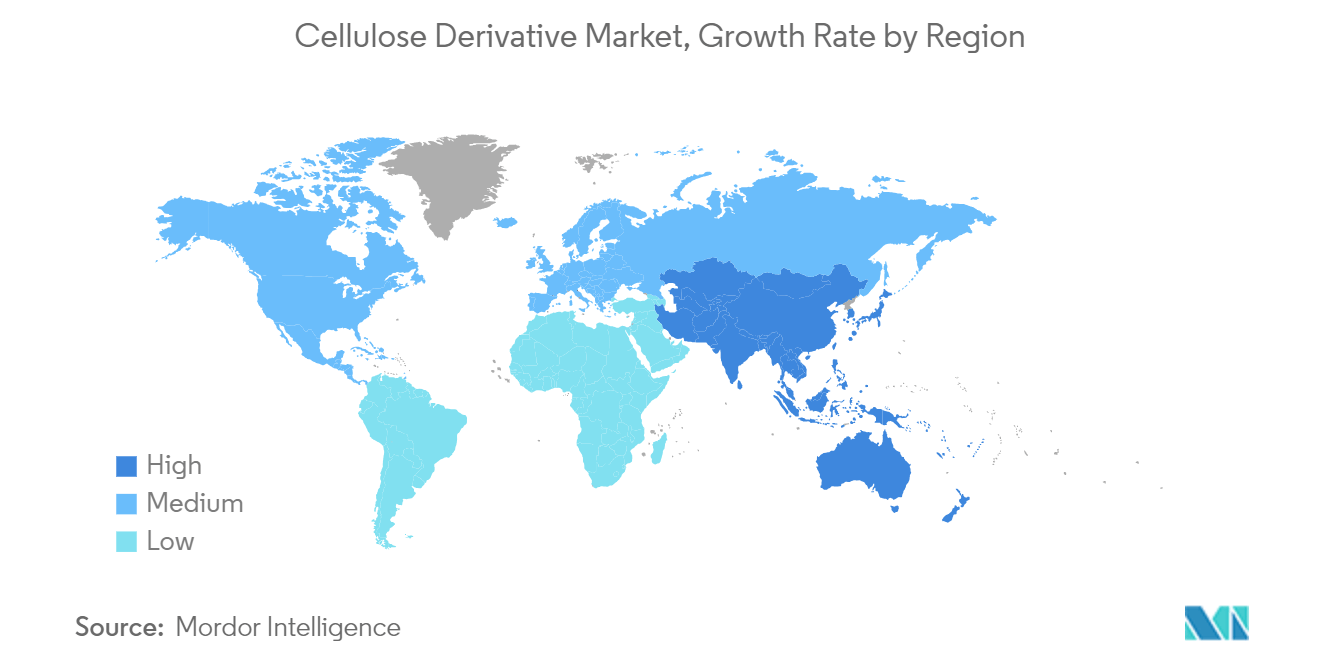Market Trends of Cellulose Derivatives Industry
Food and Beverage Industry to Dominate the Market
- Methylcellulose, hydroxypropyl cellulose, and carboxymethyl cellulose, among others, are the cellulose derivatives that are being extensively used to produce films owing to their suitable chemical and mechanical properties. Cellulose alone or with other matrixes has been employed in food packaging applications.
- Cellulose ether is odorless, tasteless, non-toxic, easily soluble, and can be stored for a long period of time. Furthermore, it has a high viscosity and strong shape-preserving capacity, all of which make it a preferred choice for the food and beverage industry.
- In the food and beverage industry, cellulose ether is used as an extender of adhesive agent in the process of jam, sugar, fruit syrup, and pungent sauce. It is also used in various dessert preparations as it enables the tissue to be homogeneous and fine, thereby making the appearance of the dessert beautiful.
- Other applications include a stabilizing agent for the production of ice cream, a fixing agent in the production of lemon and grape drinks, semi-fluid edible oil, as a film-forming agent in the surface treatment of vegetables, fruit, eggs, and tea leaves to keep the original color and flavor for long, etc.
- Moreover, the food packaging market will significantly support the growth in demand for cellulose derivatives worldwide. The underlying reason for the increase in food packaging is the increase of focus on food safety, promotion and higher value among consumers, and higher shelf life of food items in the growing urban lifestyle worldwide. The consumption of fast food is projected to keep growing, and the demand for ready-to-eat food products and convenience food will also likely grow because of the hectic lifestyles and growing disposable income of people globally.
- According to the All India Food Processors Association, the Indian food and beverage packaging industry is growing exponentially year-on-year and is expected to reach USD 86 billion in 2029, following rapid urbanization, rising disposable incomes, and evolving consumption patterns.
- As per the latest data from the Barbecue Lab, 83% of families in the United States eat at fast food restaurants at least once a week, and about 45% of the people of age group 20-39 residing in the country eat fast food on any given day.

Asia-Pacific Region to Dominate the Market
- Asia-Pacific is the largest market in cellulose derivatives, with market segments like the textile industry, cosmetics, and pharmaceuticals growing in the coming years. Moreover, the increasing penetration of the manufacturing base in Asian countries is expected to support the growth.
- China's textiles, apparel, and clothing accessories export was worth USD 323.344 billion in 2022, a growth of 2.53% over the previous year. According to the World Trade Organization (WTO), in terms of share in world textile exports in 2022, China remained a global leader, with a share of around 31.7%. With the increase in textile production, the cellulose market is expected to register a gradual growth in China.
- The Indian textile sector is one of the oldest industries in the Indian economy, dating back several centuries. According to Invest India, the Indian textile and apparel market size was estimated to be around USD 165 billion in 2022, with the domestic market constituting USD 125 billion and exports contributing USD 40 billion.
- Construction is also a significant end-user industry for the cellulose derivatives market due to its use in construction materials such as adhesive, mortars, and cement, among others, for property enhancement applications. Asia-Pacific is the largest producer of such construction materials. For instance, according to the US Geological Survey, in 2022, China, India, and Vietnam were the largest cement producers globally.
- Moreover, cellulose derivatives are extensively utilized in the Paper end-user industry for the production of paper, cardboard, and paperboard products. Asia-Pacific is among the largest producers of such products globally, making it a significant consumer of cellulose derivatives. For instance, according to the Food and Agriculture Organization (FAO), in 2022, China, Japan, India, Indonesia, and South Korea were among the top 10 producers of paper and paperboard.
- It is also expected to be the fastest-growing market during the forecast period, with increasing demand for segments like the textile, food & beverage industries in China, India, and the ASEAN countries. Moreover, the established cosmetic industry in Japan and South Korea is also contributing to the growth of cellulose derivatives.


